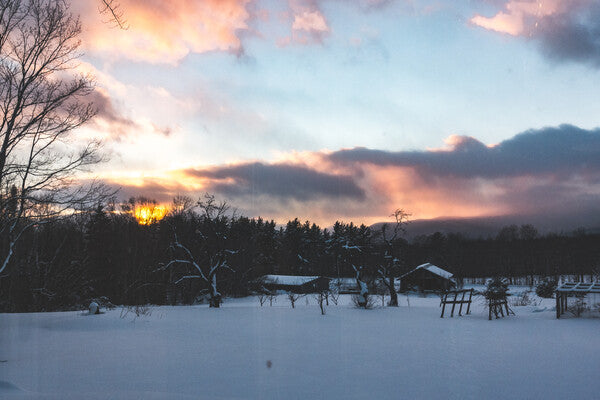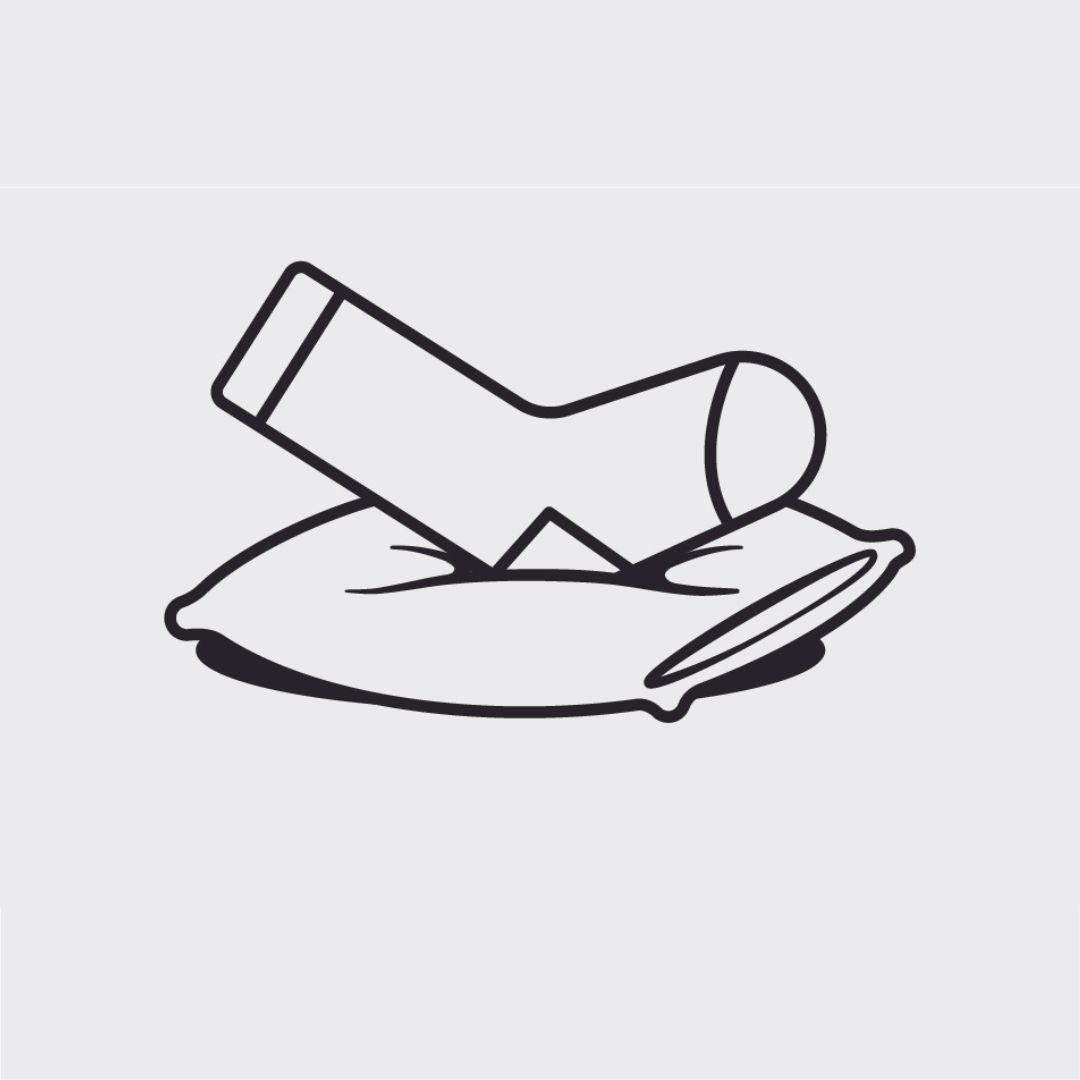A Smugglers’ Notch Ski Patroller Talks On-Hill Foot Care

Winter is finally starting for snow lovers, but for ski patrollers, the season goes all year long.
I’m a Full Senior ski patroller at Smugglers’ Notch, and the patroller of record teaching candidate patroller trainees from around Vermont emergency medical care during the off-season. My name is Chris, and this will be my 43rd winter wearing a red jacket with the white cross.
Besides a love of skiing, I’ve got some opinions about safety, my socks, and how people can take care of their feet up on the mountain. I might just tell you about my favorite place to ski, also.
My East Coast Origin Story: “You Call That Ice?”
It’s fair to say I didn’t understand what “ice” meant on the East Coast at first. I started out ski patrolling at age 17 in North Eastern Washington. Where I grew up skiing, frost was what I used to call ice.
The first time I skied Catwalk at Smugglers’ Notch (aka Smuggs), water had melted and frozen across part of the trail. It was crazy seeing that ice and thinking, "Nope, you can't stop on this stuff." You literally had to plan your route across it and find your exit on the other side. Now I know when it's blue, that means its ice around here.

Vermont’s freeze-thaw cycles are no joke. We get amazing powder that could last for weeks, then a temperature swing might flip that around overnight. There are times when we're doing our trail checks in the morning, and you hope your edges are sharp. You're literally just vibrating as you're carving, because the surface froze up everywhere the groomers went, and now it's bulletproof.
Between the storm cycles, the cold, and the wind, the weather is always throwing something different at us. We even have a patroller who climbed Everest and said some of his best training was right here on Smuggs, because it mimicked some of the conditions on that world-class ascent.
The Smugglers' Notch Vibe. And About That Ice...
Ok. Let me roll that description of Vermont’s tougher conditions back a bit. I’ve been living in Vermont since 1986 — we get plenty of amazing snow, or else I wouldn’t still be patrolling and skiing here. Smuggs has something for everyone in the family. And it definitely isn’t glare, un-edgeable ice all the time.

After moving to Vermont, my husband and I tried out several ski resorts. Then we went to Smuggs, and really haven't looked back. Why’d we decide to post up here? In no particular order:
The mountains. We’ve got three of them, really. Morse, where the village is, has perfect beginner trails. Then you come up to Sterling, more of an intermediate mountain, and onto Madonna, which is more the advanced mountain. There are crossover trails between them. It's really nice having three mountains with terrain for whatever your level of skiing or riding you’re at.
The vibe. It’s not a fancy, fast-paced ski resort. We don't have detachable quads and all that, but like I tell people, would you rather wait at the bottom of the mountain a few minutes longer where it's five degrees warmer, or go to the top of the mountain quickly and have to wait in a crowd, or be on trails that have been widened to fit all that traffic? Smuggs has an old-time feel to it. And once you get up onto the trails, it doesn't feel crowded at all.

The trees. We get some of the best storms in the state, and the trees hold onto that powder. We make trails in the trees, keep things clean, and really try to open things up to get everybody out there, safely (More on that later…).
Family. I grew up skiing and then patrolling with my sister and father. It was something we did as a family, and now my daughter skis and patrols at Smuggs. Between the mountains, the lifts and just the whole feeling here, Smuggs is for families, and that’s how I like it.
43 Years of Advice on Treating Your Feet Right

I've Got My Favorite Socks. Most Patrollers Do, Too.
Now that you’ve seen how rugged, and beautiful, the mountains are around here, trust me when I say you need to start with the best. After 43 years of patrolling, I’ve got my go-to’s.
I prefer extremely thin socks, like the Captain Stripe lightweight ski socks. I want a lot of warmth in them, but no extra cushioning. Being in my boots for at least ten hours a day means I need to be comfortable, and I want my socks to work for me.
When I bring in a bag of socks for our patrollers, I’ve got to have a mix of thin ones, and also ones with padding only on the front, and others with cushioning all the way through. Our whole team is also very particular about what styles they want. Everyone is different, down to what they like to use in their boots.

I tried other sock brands and they didn’t last. The elastic failed, and they wore out. As a Quality Control Auditor here at Darn Tough, I see what goes into making ski and snowboard socks that are Unconditionally Guaranteed for Life.
My husband has been wearing the same six pairs of Darn Tough socks for close to 13 years. And he gets 40 days in an average season.
Boot Up: Get Your Equipment Ready for Winter
Next, it’s all about the boots you’ll be wearing all day. My advice for setting yourself up for happiness here is similar to choosing your socks — everyone’s feet are unique, and you need to find out what works for you.
Anytime you’re buying new ski boots, getting them properly fitted is essential. Take your time at the boot shop, talk to the employees, and try on different models. Remember, it’s warm in that shop, and the boot is going to flex differently out in the cold.
If you get out and ski with your new boots and find something is pinching, go back to the shop. They can adjust the boot for you. Depending how your feet, one approach would be to start small so the heel fits great, then have the boot fitter expand the toe box. That’s just one example— there are a lot of different options out there, so don't settle for being uncomfortable.

Then there’s the cold. I'm talking a 20-below day when the wind chill is hellish and by the time you get to the top of that chairlift, you're shivering. At that point, you need to go inside to warm up. That's when us patrollers eat extra food to keep our energy going and get the blood down to our feet to keep things warm.
Another issue I see is when people have their boots too tight. If you’re cutting off the blood flow, it’ll just make your feet colder on those super cold days. I like my boots tight, but when the temperature drops, I'll loosen them a bit to make sure to get circulation down to my feet.
At the end of the day, figuring out what works for you from sock to boot, is key. But starting with warm and dry boots is important for anyone. Going out in wet boots or socks means your feet will get cold faster. To avoid that, go with boot dryers, or just blow air into them overnight. Some people actually find that they need to pop the liners out to make sure they get fully dry. It all depends on how sweaty your feet are.
My Patroller Tips for Staying Safe on the Mountain
I’ll end my time on the soapbox by answering a question that Jenny Hastings, Darn Tough Digital Content Specialist, asked me: What patroller-inside advice do you wish the everyday skier and rider knew about mountain safety?
I’ve been giving over 500 hours a year to patrolling for a while now. That’s because I love skiing, and I love helping people. Here’s what it comes down to for me:
First off, know where you’re going. Ask locals, or ask ski patrol, “How can I get here?” or look at your trail map. In some situations, it’s critical to know before you go. The woods aren’t mapped, and while some offshoots lead to back to a trail, others could lead to a cliff. Ski in a group when you’re out there, so if someone gets hurt, you can leave one or two people with that injured person and send another for help. You can’t do that by yourself.
Second, a cellphone is great, and the first number I’d say you should call is your mountain’s patrol number. 911 is important, but when you reach their dispatch, it’ll take longer for us to get notified.

Third, try to be aware of where you are on the mountain. If you’re in trouble, it saves us time to know you’re on Rumrunner right below the exit to Poacher’s Woods, for example.
Fourth, ski at your ability. A black diamond isn’t the same in southern Vermont as it is here at Smuggs, or out west. Patrollers love to talk about their mountains, so just ask us: “Hey, how is this trail skiing today? How does this trail compare to that trail? I’m a novice, where should I go today?” We will totally help you. We’d rather go out there and ski with you and show you what’s going on than treat you for an injury. We’re all out there to have fun.
Last, just respect everybody on the mountain, and be kind.

About the Author
Chris Southworth started ski patrolling as a teenager with her sister and father, and is keeping it in the family, patrolling with her husband and daughter. Chris loves to help, so when she isn’t patrolling at Smugglers’ Notch, she’s teaching her Darn Tough co-workers first aid and CPR.







